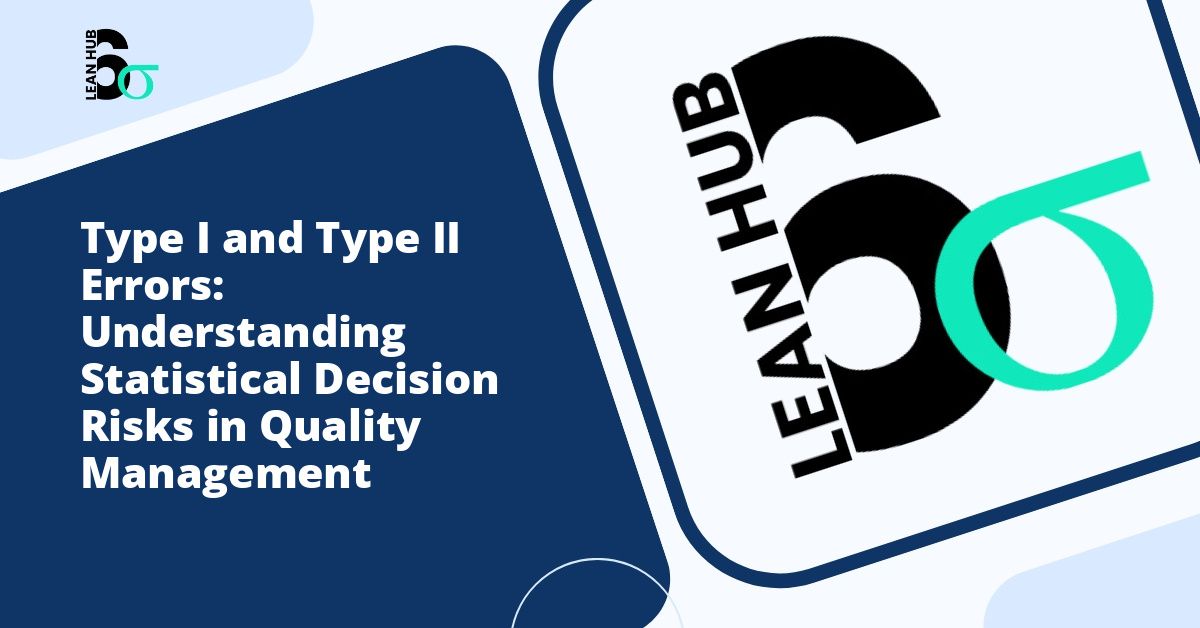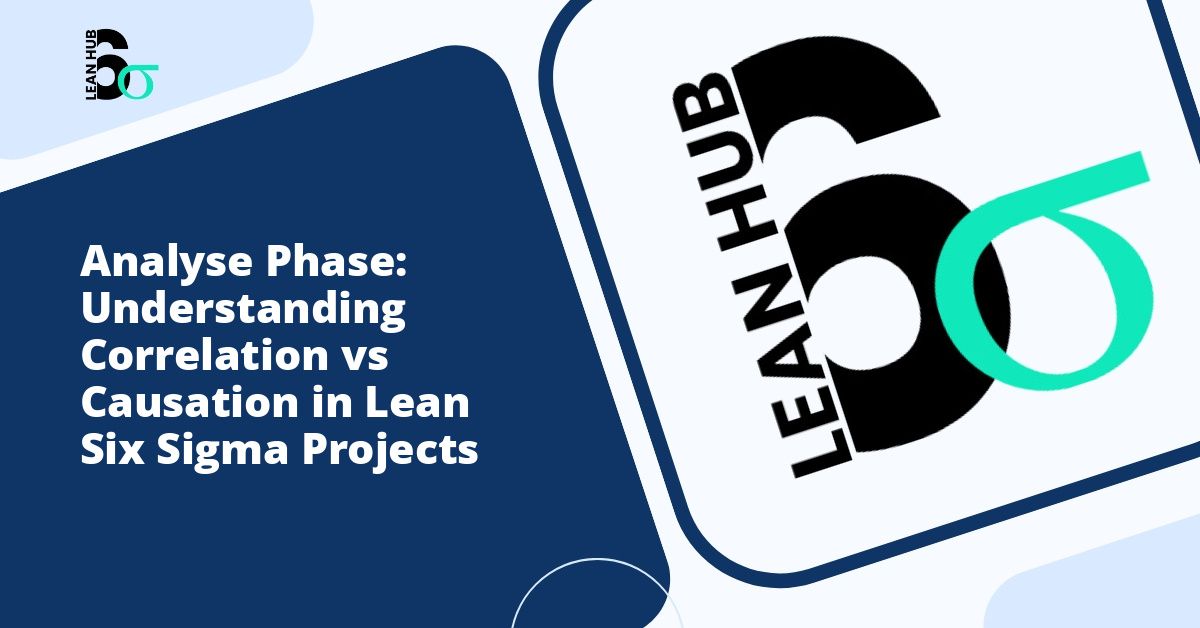In the world of data-driven decision making, understanding statistical errors is crucial for professionals across industries. Whether you’re working in quality management, healthcare, manufacturing, or research, the concepts of Type I and Type II errors form the foundation of sound statistical reasoning. These errors represent the risks inherent in hypothesis testing and decision-making processes, particularly within frameworks like lean six sigma methodologies.
The Foundation of Statistical Decision Making
Statistical hypothesis testing operates on a fundamental principle: we make decisions about populations based on sample data. However, because we’re working with samples rather than entire populations, there’s always a possibility of making incorrect conclusions. This is where Type I and Type II errors come into play, representing two distinct ways our statistical decisions can go wrong. You might also enjoy reading about Fishbone Diagram Alternative Methods: Text-Based Root Cause Analysis for Problem Solving.
In any hypothesis test, we begin with a null hypothesis (H0), which typically represents the status quo or a statement of no effect. We also have an alternative hypothesis (H1), which represents what we’re trying to prove or the change we expect to see. Based on our sample data, we either reject the null hypothesis or fail to reject it. Each of these decisions carries potential risks. You might also enjoy reading about P-Value Explained: What It Means and How to Interpret It in Six Sigma Projects.
What is a Type I Error?
A Type I error occurs when we reject a null hypothesis that is actually true. In simpler terms, it’s a false positive result. We conclude that there is an effect or difference when, in reality, none exists. This type of error is also known as an alpha error, and the probability of making this error is denoted by the Greek letter α (alpha). You might also enjoy reading about 5 Whys Technique: How to Dig Deep and Discover Root Causes in Problem-Solving.
Consider a practical example in manufacturing: Suppose a quality control inspector tests a batch of products and concludes that the batch is defective when it actually meets all specifications. This false alarm could lead to unnecessary waste, as perfectly good products might be discarded or reworked, resulting in increased costs and reduced efficiency.
Real-World Implications of Type I Errors
- Medical Testing: Diagnosing a healthy patient with a disease they don’t have, leading to unnecessary treatment and psychological stress
- Legal Systems: Convicting an innocent person of a crime
- Manufacturing: Halting production based on false quality concerns, reducing productivity
- Marketing: Concluding a campaign is effective when any observed improvement is due to random chance
The significance level of a test, typically set at 0.05 or 5%, represents the maximum probability of Type I error that researchers are willing to accept. This means we’re accepting a 5% chance of incorrectly rejecting a true null hypothesis.
What is a Type II Error?
A Type II error occurs when we fail to reject a null hypothesis that is actually false. This is a false negative result, meaning we miss detecting a real effect or difference. This error is also called a beta error, with its probability denoted by β (beta).
Using our manufacturing example again: A Type II error would occur if an inspector approves a defective batch of products, concluding it meets specifications when it actually doesn’t. This could lead to defective products reaching customers, resulting in returns, complaints, damage to reputation, and potential safety issues.
Real-World Implications of Type II Errors
- Medical Testing: Failing to diagnose a disease in a patient who actually has it, delaying critical treatment
- Legal Systems: Acquitting a guilty person
- Product Development: Missing a genuine improvement in a new process or product design
- Safety Monitoring: Failing to detect a real hazard or risk in a system
The power of a statistical test, calculated as (1 – β), represents the probability of correctly rejecting a false null hypothesis. Higher power means a lower probability of Type II error, making it easier to detect real effects when they exist.
The Relationship Between Type I and Type II Errors
One of the most important concepts in statistical decision-making is understanding the inverse relationship between these two error types. Generally, when you decrease the probability of one type of error, you increase the probability of the other, assuming sample size and effect size remain constant.
If you make your criteria for rejecting the null hypothesis more stringent (decreasing alpha to reduce Type I errors), you make it harder to detect real effects (increasing beta and Type II errors). Conversely, if you make it easier to reject the null hypothesis (increasing alpha), you’ll catch more real effects but also increase false positives.
This tradeoff requires careful consideration based on the relative costs and consequences of each error type in your specific context.
Application in Lean Six Sigma Methodologies
Within lean six sigma frameworks, understanding these statistical errors is particularly crucial during the recognize phase and throughout process improvement initiatives. Lean six sigma practitioners use statistical tools to identify problems, analyze root causes, and verify improvements. Making the wrong statistical conclusion can derail entire improvement projects.
During the recognize phase, teams identify opportunities for improvement and define project scope. Statistical decision-making helps determine whether observed variations in processes represent true signals requiring intervention or merely random noise. Misidentifying these signals due to Type I or Type II errors can lead to wasted resources or missed improvement opportunities.
Practical Strategies in Lean Six Sigma
Lean six sigma professionals employ several strategies to minimize both error types:
- Increase Sample Size: Larger samples reduce both error types simultaneously, though this requires more resources
- Set Appropriate Significance Levels: Choose alpha levels based on the relative costs of each error type in the specific context
- Use Power Analysis: Calculate required sample sizes to achieve desired power levels before conducting studies
- Implement Control Charts: Monitor processes continuously to distinguish between common cause and special cause variation
- Conduct Pilot Studies: Test improvements on a small scale before full implementation to gather preliminary data
Making Informed Decisions About Error Risks
The key to managing Type I and Type II errors lies in understanding their relative consequences in your specific situation. Ask yourself: Which error would be more costly or dangerous in this context?
In medical screening for serious diseases, Type II errors (missing actual cases) are typically considered more serious than Type I errors (false positives), because missing a diagnosis could be life-threatening. Therefore, medical tests often use higher alpha levels to ensure they catch most true cases, accepting more false positives that can be filtered out with follow-up testing.
Conversely, in criminal justice, the system traditionally prioritizes avoiding Type I errors (convicting innocent people) over Type II errors (acquitting guilty people), following the principle that it’s better for guilty persons to go free than for innocent persons to be punished.
Minimizing Both Error Types
While the inverse relationship between Type I and Type II errors presents challenges, several approaches can help minimize both:
Increase Sample Size: This is the most straightforward solution. Larger samples provide more information, reducing uncertainty and allowing for lower rates of both error types. However, larger samples require more time, money, and resources.
Improve Measurement Precision: More accurate and reliable measurement tools reduce variability in data, making it easier to detect real effects and avoid false conclusions.
Use Sequential Testing: Rather than making a single decision, sequential methods allow for collecting data in stages, adjusting conclusions as more information becomes available.
Apply Multiple Testing Corrections: When conducting multiple hypothesis tests simultaneously, adjust your significance levels to maintain the desired overall error rate.
Conclusion
Understanding Type I and Type II errors is essential for anyone involved in data-driven decision making, from lean six sigma practitioners to researchers and business analysts. These concepts help us recognize the inherent uncertainties in statistical inference and make more informed choices about how to balance competing risks.
By recognizing that every statistical decision carries potential error risks, we can design better studies, choose appropriate significance levels, and interpret results more carefully. Whether you’re in the recognize phase of a lean six sigma project or conducting any form of hypothesis testing, keeping these error types in mind will lead to more robust conclusions and better outcomes.
Remember that the goal isn’t to eliminate all possibility of error, which is impossible when working with sample data, but rather to understand, quantify, and appropriately manage these risks based on the specific context and consequences of your decisions. With this understanding, you can make statistical choices that align with your organization’s priorities and risk tolerance, ultimately leading to better decision-making and improved results.








